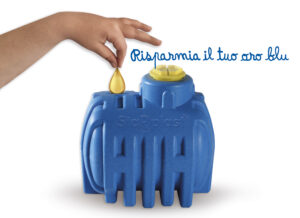
EUROPEAN WATER CHARTERadopted by the Council of Europe (Strasbourg, May 6, 1968)
There is no life without water. Water is a precious commodity indispensable to all human activities.
Water falls from the atmosphere to the earth where it arrives mainly in the form of rain or snow. Streams, rivers, lakes, and glaciers are the major pathways through which water reaches the oceans. During its journey it is retained by soil, vegetation, and animals. Water returns to the atmosphere mainly by evaporation and plant transpiration. It is for humans, animals and plants a basic necessity. In fact, water constitutes two-thirds of man’s weight and up to nine-tenths of the weight of plants. It is indispensable to man as a beverage and as food, for his hygiene and as a source of energy, a raw material for production, a route for transportation and the basis of the recreational activities that modern life increasingly demands.
Freshwater supplies are not inexhaustible. It is essential to preserve, control and, if possible, increase them. As a result of the population explosion and the rapid increase in the needs of modern agriculture and industry, water resources are under increasing demand. We will not be able to meet this demand, nor raise the standard of living, unless each of us learns to regard water as a precious commodity that must be preserved and rationally used.
To alter the quality of water is to harm the lives of humans and other living things that depend on it. Water in nature is a vital medium that harbors beneficial organisms that help maintain its quality. By contaminating it, we risk destroying these organisms, thereby altering the process of self-purification by unfavorably and irreversibly changing the vital medium. Surface water and groundwater must be preserved from contamination. Any major degradation in the quality or quantity of a running or stagnant water is likely to be harmful to humans and other animal and plant life.
Water quality must be maintained to meet the needs of the intended uses, especially for public health needs. These quality standards may vary according to the different uses of water, namely for food, domestic, agricultural and industrial needs, fishing and recreation. However, since life in its infinite different aspects is affected by the multiple qualities of water, measures should be taken to ensure the preservation of the natural properties of water.
When water, after being used, is returned to the natural environment, it should be in a condition that does not compromise the possible uses of the environment, whetherpublic or private. Contamination is a change, generally caused by man, in the quality of water such that it is unsuitable or harmful to human consumption, industry, agriculture, fishing, recreation, domestic animals, and wildlife. The discharge of processing residues or used water, which causes contamination of a physical, chemical, organic, thermal or radioactive order, shall not endanger public health and shall take into account the capacity of waters to assimilate, by dilution or self-purification, the discharged residues. The social and economic aspects of water treatment methods are of great importance in this regard.
The preservation of appropriate vegetation cover, preferably forest, is essential for the conservation of water resources. Vegetation cover, preferably forest, must be maintained or replenished as quickly as possible whenever it has been destroyed. Safeguarding the forest is a major factor in stabilizing watersheds and their hydrological regime. On the other hand, forests are useful both for their economic value and as a place of recreation.
Water resources need to be carefully inventoried. Usable fresh water accounts for less than 1 percent of the amount of water on our planet and is very unevenly distributed. It is essential to know the availability of surface and groundwater, taking into account the water cycle, its quality and its use. Inventory will mean the quantitative survey and assessment of water resources.
Good water management should be the subject of planning by the relevant authorities.
Water is a precious resource that needs rational management according to a plan that reconciles both short-term and long-term needs at the same time. A real policy is required in the area of water resources, which require numerous interventions with a view to their conservation, regulation and distribution. The preservation of water quality and quantity also requires the development and refinement of utilization, recovery and purification techniques.
Water conservation involves a major effort in scientific research, training of specialists and public information. Scientific research on water, after its use, must be encouraged to the fullest extent possible. The media will have to be expanded and news exchanges extended internationally and facilitated since technical and biological training of qualified personnel in the various disciplines involved is required.
Water is a common heritage whose value must be recognized by all. Everyone has a duty to economize and use it with care. Each individual is a consumer and a user of water. As such he has a responsibility to other consumers. To use water thoughtlessly is to abuse the natural heritage.
Water resource management should be framed within the natural balance rather than within administrative and political boundaries.
Water has no borders. It is a common resource whose protection requires international cooperation. International problems that may arise from water use should be solved by mutual agreement among states in order to safeguard water in both its quality and quantity.

